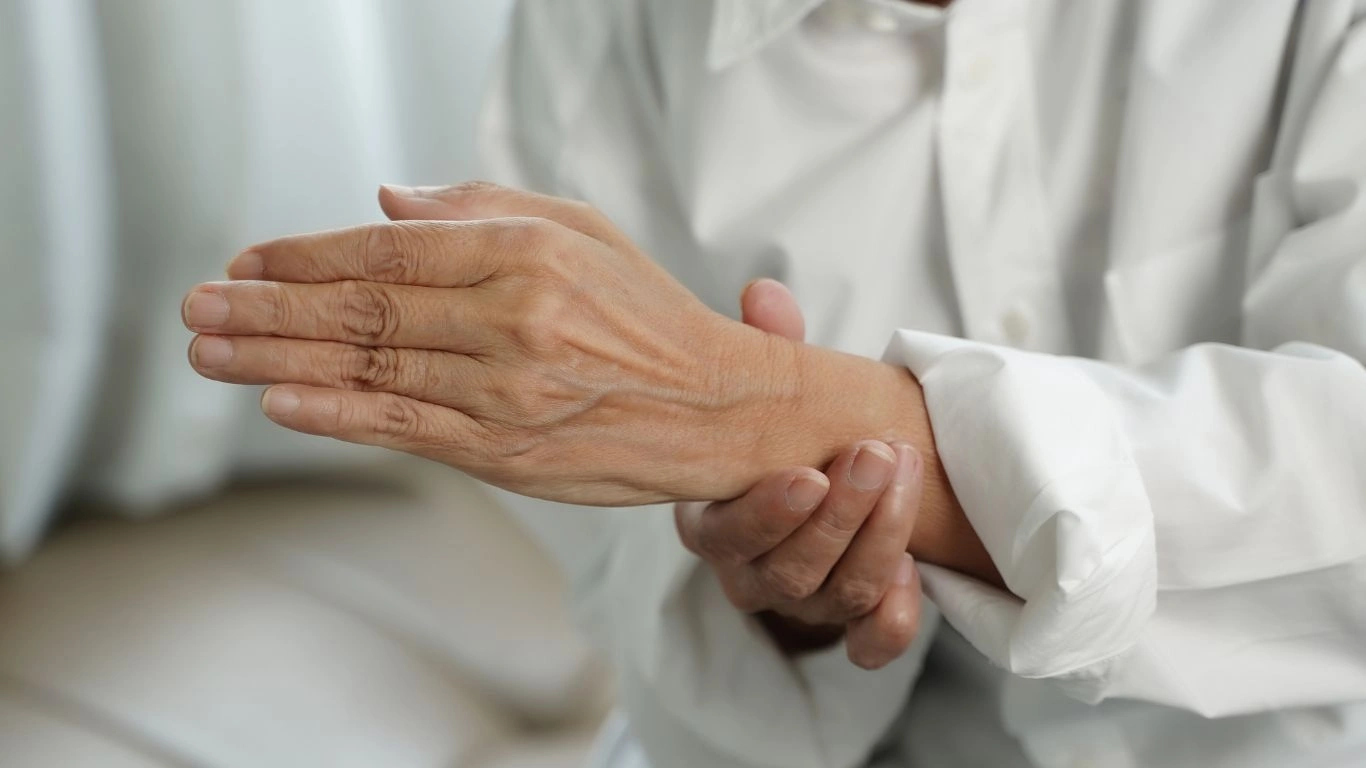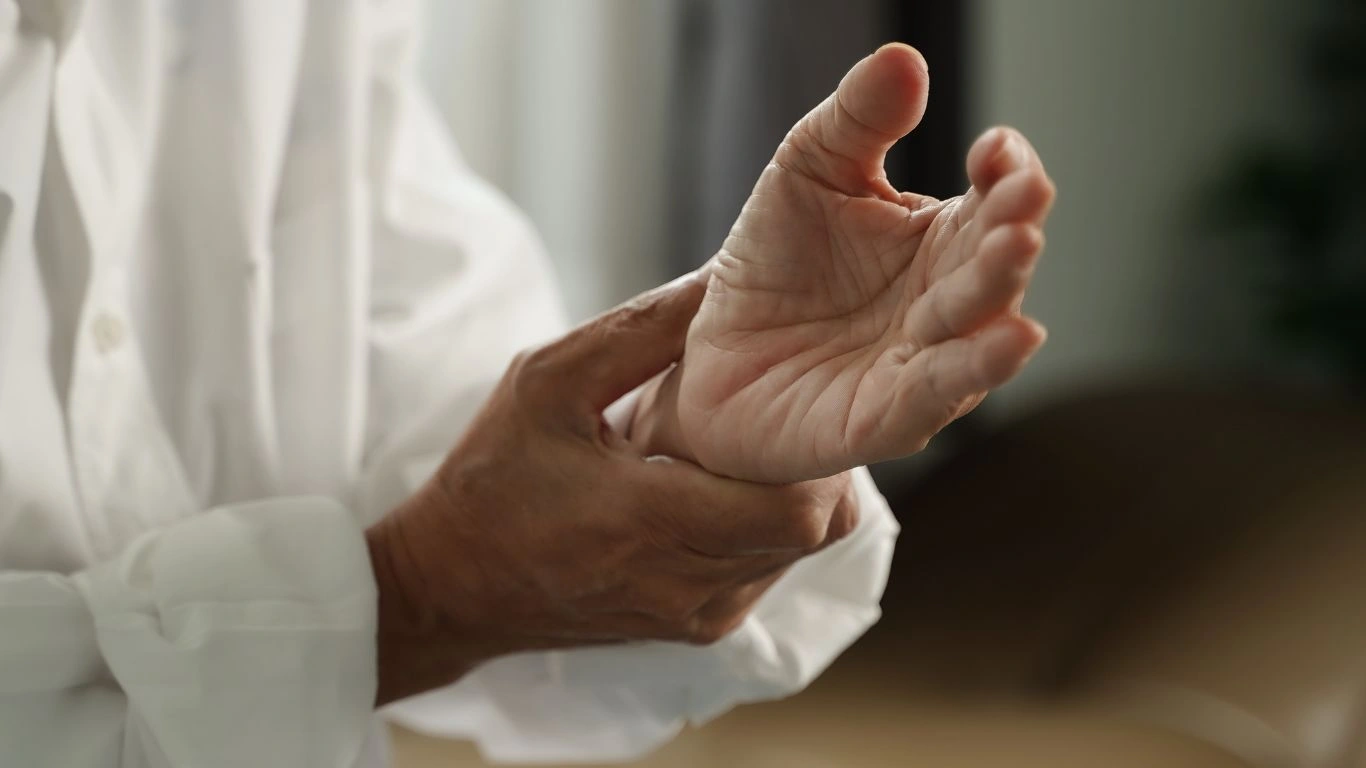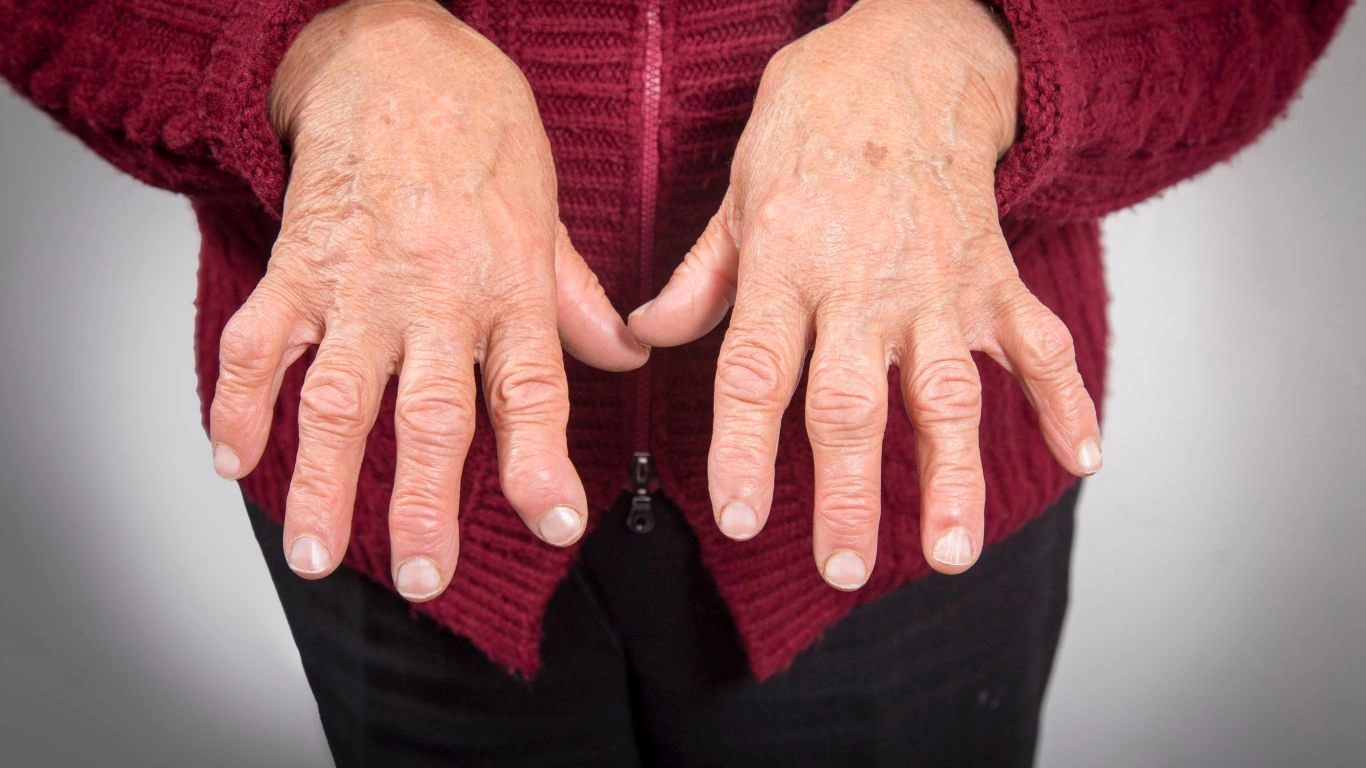Rheumatoid Arthritis and Its Connection to Autoimmune Diseases
Rheumatoid arthritis (RA) is more than just a condition that causes joint pain; it’s a chronic autoimmune disorder that affects the whole body. As someone who’s been in the field of managing rheumatoid arthritis for years, I’ve seen firsthand how RA isn’t just about joint inflammation—it can disrupt a person’s entire quality of life. What’s fascinating is how rheumatoid arthritis is deeply connected to autoimmune diseases, which makes understanding this connection even more crucial. Today, I want to break down what RA is, how it impacts the body, and what role the immune system plays in all of this. Grab a cup of coffee, and let’s dive in together!
The Basics of Rheumatoid Arthritis and Autoimmune Disease
If you’re familiar with autoimmune diseases, you might already know that the body’s immune system typically works as a defense mechanism. It’s like a soldier protecting you from viruses and bacteria. But in the case of autoimmune diseases, the immune system gets a little confused and attacks healthy tissue instead. This is what happens with rheumatoid arthritis—your immune system targets your joints, causing inflammation and pain. It’s like your body’s defense mechanism gets stuck in overdrive, not realizing it’s attacking your own body.

Understanding the Link Between RA and Autoimmune Diseases
Rheumatoid arthritis isn’t the only autoimmune condition out there, but it’s one of the most prevalent. When we talk about autoimmune diseases, we’re discussing a group of disorders where the body mistakenly attacks itself. With RA, it’s primarily the joints, but other autoimmune diseases, like lupus or multiple sclerosis, might target different parts of the body. The common thread? The immune system malfunctioning.
For those of us working closely with RA patients, understanding this connection is vital. It’s not just about giving someone medication for pain relief—there’s a much bigger picture. There are various factors at play: genetics, environmental influences, and even lifestyle choices. We don’t always know why the immune system starts attacking the joints, but we do know that it’s connected to the complex mechanisms of autoimmune disorders.

How Does the Immune System Contribute to Rheumatoid Arthritis?
Let’s dig a little deeper into the immune system’s role. In a healthy body, the immune system targets and destroys harmful invaders, like bacteria. But with RA, the body’s immune response goes haywire. Instead of protecting the body, it starts attacking synovium (the lining of your joints). This leads to inflammation, pain, and sometimes permanent joint damage. And that’s where things get tricky. The immune system isn’t just “missing” the mark; it’s actively causing harm by triggering an inflammatory response.
What’s even more interesting (and a bit frustrating) is that RA doesn’t just attack one joint—it often targets multiple joints at once, typically in a symmetrical pattern. For example, you might feel pain in both knees or both wrists at the same time. The immune system is attacking these joints without any real “reason” other than that it has become confused about what’s harmful and what isn’t.
What Causes Rheumatoid Arthritis to Develop?
As I’ve worked with patients throughout the years, one of the most common questions I get is, “What causes rheumatoid arthritis?” Unfortunately, there’s no one-size-fits-all answer. A combination of genetic and environmental factors seem to play a role. RA tends to run in families, so if you have a close relative with the condition, your risk may be higher. But it’s not just genetics at play here—things like smoking, viral infections, and even obesity can increase the risk of developing RA.
- Genetics: Certain genes make people more susceptible to RA, though not everyone with these genes will develop it.
- Smoking: This is one of the most significant environmental risk factors for RA. If you’re a smoker and have a genetic predisposition, the chances of developing RA increase significantly.
- Infections: Some researchers believe that infections might trigger RA, especially if someone is genetically predisposed.

The Role of Inflammation in RA
One of the things I always emphasize with my patients is the role that inflammation plays in RA. It’s not just about joint pain. Inflammation is the body’s natural response to injury or infection. But with RA, inflammation is chronic, and it affects more than just the joints. It can impact organs, cause fatigue, and increase the risk of heart disease. Managing inflammation effectively is one of the keys to managing RA.
In the long term, untreated inflammation can damage not just the joints but other organs, too. That’s why early detection and intervention are so crucial. There are medications that help control this inflammation, and getting the right treatment early on can make a huge difference in improving quality of life.
How Rheumatoid Arthritis Affects Daily Life
As much as we like to talk about the science behind rheumatoid arthritis (RA), it’s the real-world impact that makes this condition so challenging. In my experience, patients often tell me that it’s not just the pain from RA that’s the issue—it’s how it changes everything about daily life. From getting out of bed in the morning to doing simple tasks like cooking dinner or playing with the kids, RA can leave you feeling drained. And that’s just the physical side of things. The emotional and mental toll is often even harder to navigate.

The Physical Impact of RA: Beyond Joint Pain
When we think of rheumatoid arthritis, we often think about painful, swollen joints. And that’s certainly a big part of it. But RA doesn’t stop there. Inflammation from RA doesn’t just stay in the joints; it can affect organs, nerves, and even the cardiovascular system. I’ve worked with countless patients who experience issues like lung problems, heart disease, and even issues with their eyes, all as a result of the inflammation caused by RA. It’s not just about pain—it’s about a whole-body condition that requires careful management.
For many of my patients, simple tasks that most people take for granted become incredibly challenging. Things like opening a jar, holding a pencil, or even buttoning a shirt can feel like major feats. The stiffness and swelling in the joints make even the simplest movements feel like they’re taking all your energy. And on top of that, the fatigue that comes with RA often feels like a never-ending weight on your shoulders.
The Mental and Emotional Toll of Living with RA
One thing I always stress to my patients is that RA isn’t just a physical condition—it has a profound mental and emotional impact as well. The constant pain, the unpredictability of flare-ups, and the frustration of feeling like your body isn’t cooperating with you can lead to feelings of anxiety, stress, and depression. I’ve had many patients open up to me about how RA has made them feel isolated or less confident in themselves. It’s hard to deal with the uncertainty that comes with a chronic condition like this. You never know if today is going to be a good day or a day filled with pain and exhaustion.
That’s why it’s so important to address the emotional side of RA, not just the physical. Encouraging patients to talk about how they’re feeling mentally and emotionally is a huge part of my approach. In my experience, getting a good support system in place—whether it’s family, friends, or a therapist—can make a world of difference. Managing RA isn’t just about medications and treatments; it’s about treating the whole person. There’s a huge connection between emotional well-being and physical health, so it’s important to take care of both.

Treatment Options for Rheumatoid Arthritis
Now that we’ve talked about the struggles of living with RA, let’s talk about the ways we can fight back. The good news is, RA treatment has come a long way over the past few decades. The goal of treatment is to reduce inflammation, manage symptoms, prevent joint damage, and improve quality of life. In my practice, I focus on a combination of medication, lifestyle changes, and physical therapy to give patients the best chance at managing their condition.
Medications: The Backbone of RA Treatment
Medications are often the first line of defense when it comes to managing rheumatoid arthritis. There are several types of drugs used to treat RA, and the choice of medication depends on the severity of the condition, the patient’s overall health, and their personal needs.
- Nonsteroidal Anti-Inflammatory Drugs (NSAIDs): These are often used to help with pain and inflammation. While they can be effective for symptom relief, they don’t address the underlying cause of RA.
- Disease-Modifying Antirheumatic Drugs (DMARDs): These medications help slow the progression of RA by targeting the immune system’s activity. Methotrexate is one of the most commonly prescribed DMARDs, and it’s been a game changer for many patients.
- Biologic Agents: Biologics are a newer class of drugs that target specific parts of the immune system to reduce inflammation and prevent joint damage. They’re often used for patients who don’t respond well to traditional DMARDs.
- Corticosteroids: In some cases, corticosteroids like prednisone are used to quickly reduce inflammation and manage flare-ups. However, these are typically used short-term due to potential side effects with long-term use.
While medications are important, they’re not the only piece of the puzzle. In my practice, I always emphasize the importance of a holistic approach to treatment, one that goes beyond just pills and injections.
Lifestyle Changes: A Key to Managing RA
Along with medications, lifestyle changes are crucial in managing rheumatoid arthritis. One of the most important things I tell my patients is to stay active. It may sound counterintuitive when you’re in pain, but gentle exercise is actually one of the best things you can do for your joints. Regular movement helps maintain joint flexibility, strengthens muscles, and reduces stiffness. I recommend low-impact activities like swimming, cycling, and yoga. Even a simple walk can help keep things moving and prevent your joints from becoming too stiff.
In addition to exercise, diet plays a significant role in RA management. While there’s no “magic” diet that will cure RA, certain foods can help reduce inflammation. Omega-3 fatty acids, found in foods like salmon, flaxseeds, and walnuts, have anti-inflammatory properties. Likewise, fruits and vegetables rich in antioxidants can help support the immune system. On the flip side, I often advise my patients to limit processed foods, sugar, and red meat—these can exacerbate inflammation.

Physical Therapy: Maintaining Mobility and Strength
Physical therapy is another crucial part of managing RA. A good physical therapist can help you with exercises that strengthen the muscles around your joints, increase flexibility, and reduce pain. In my experience, patients who participate in physical therapy often have a much better quality of life because they feel more confident and capable in their movements.
Therapists can also teach you techniques for performing daily tasks in ways that put less strain on your joints. It’s all about finding balance—balancing activity with rest, pushing your limits without overdoing it, and learning to listen to your body.
Case Studies & Real-Life Examples
There’s no better way to understand the complexities of rheumatoid arthritis (RA) than through real-life stories. Over the years, I’ve had the privilege of working with numerous patients, each with their own unique journey with RA. In this section, I want to share a couple of stories that highlight how this condition can affect people in different ways and demonstrate the power of early diagnosis and proper treatment.
Case Study 1: Sarah’s Story – Managing RA with Medication and Lifestyle Changes
Sarah, a 42-year-old woman, came to me after experiencing joint pain and fatigue for several months. She had been a runner in her younger years and loved staying active, but suddenly, she found herself struggling to get out of bed in the morning due to stiffness in her wrists and knees. After a few visits, we confirmed that she had rheumatoid arthritis. Her condition had progressed quickly, and she was starting to notice difficulty even with simple activities like typing at work and lifting groceries.
We immediately started her on disease-modifying antirheumatic drugs (DMARDs) and discussed some lifestyle changes. I advised Sarah to incorporate gentle stretching and low-impact activities into her routine, like swimming and cycling. While it was tough at first, Sarah noticed significant improvements after a few weeks. Not only did her pain reduce, but she also started to feel more energized. Her story is a perfect example of how early intervention and a balanced approach to medication and physical activity can make a world of difference. It’s inspiring to see how Sarah, even after years of managing RA, continues to lead a fulfilling, active life.
Case Study 2: John’s Journey – Overcoming the Emotional Struggles of RA
John, a 58-year-old man, had been living with RA for over a decade. But what made his journey different was the mental and emotional toll RA took on him. For years, he pushed through the pain, but the constant fatigue and unpredictability of flare-ups left him feeling isolated and depressed. He had trouble keeping up with his friends and family, and often, his condition made him feel as though he couldn’t do anything “normal” anymore.
It wasn’t until John sought out therapy to help with the emotional aspects of RA that he started to turn a corner. We worked together to develop a plan that included both physical treatment and mental health support. John’s new approach included counseling for anxiety and depression, as well as regular joint exercises. With a combination of RA medication, emotional support, and his own determination, John found himself slowly gaining confidence again. His story shows that RA doesn’t just affect your joints—it affects your mind and spirit. Tackling both aspects can lead to a much better quality of life.

Key Takeaways: What You Need to Remember
Rheumatoid arthritis is a complex condition that affects not just the joints but the entire body. Here are some key takeaways that you should keep in mind if you or a loved one are navigating life with RA:
- Early diagnosis is crucial: The sooner RA is diagnosed and treated, the better the chances of preventing long-term damage. It’s important to pay attention to symptoms like joint pain, swelling, and fatigue, and seek medical attention early on.
- RA is an autoimmune disease: This means the immune system mistakenly attacks your joints. While it’s not fully understood why this happens, there are treatments that can help control the immune system’s activity.
- A holistic approach is essential: Medication, exercise, diet, and emotional well-being all play important roles in managing RA. It’s not just about popping a pill—it’s about managing the condition from all angles.
- RA affects everyone differently: Some people experience mild symptoms, while others may face severe joint damage. Finding the right treatment plan for your individual needs is key to managing RA effectively.
- Support is vital: The emotional toll of RA can be just as challenging as the physical pain. It’s important to build a strong support system and seek help when needed, whether that’s from family, friends, or a professional.
FAQs
Now that we’ve covered a lot about rheumatoid arthritis and its impact, let’s answer some frequently asked questions. If you have RA, or if you’re just trying to learn more, these answers might help clarify some common concerns.
1. Can RA be cured?
Unfortunately, there is no cure for rheumatoid arthritis. However, with proper treatment, including medication, lifestyle changes, and physical therapy, many people with RA are able to manage their symptoms effectively and lead fulfilling lives. The key is early diagnosis and an ongoing treatment plan tailored to each individual.
2. How can I reduce inflammation caused by RA?
In addition to medications prescribed by your doctor, there are a few things you can do to help reduce inflammation. Eating an anti-inflammatory diet that includes foods like omega-3-rich fish, fruits, and vegetables, and avoiding processed foods can be beneficial. Regular physical activity, like swimming or walking, can also help maintain joint health and reduce inflammation.
3. Does stress make rheumatoid arthritis worse?
Yes, stress can trigger flare-ups in people with rheumatoid arthritis. Managing stress is essential, and techniques like deep breathing, yoga, and mindfulness can help. Additionally, therapy and support groups can help address the emotional challenges of living with a chronic condition.
Bonus: Additional Resources or DIY Tips
If you’re dealing with rheumatoid arthritis, here are a few extra tips and resources that could be helpful:
- Join an RA Support Group: Connecting with others who understand your experience can be incredibly helpful. Many people with RA find comfort and valuable tips by joining online or in-person support groups.
- Try Aquatic Therapy: Swimming or water aerobics can provide low-impact exercise that is easy on the joints while still helping to build strength and flexibility.
- Consider Seeing a Nutritionist: A nutritionist can help you create an anti-inflammatory meal plan to support your overall health.
Appendix: Table, References, and Disclaimer
For those looking for additional information, we’ve included a list of helpful references below. If you’re interested in diving deeper into rheumatoid arthritis and autoimmune diseases, these resources are a great place to start.
Disclaimer: This article is intended for informational purposes only and is not a substitute for professional medical advice. Always consult with your healthcare provider before starting any new treatment or making changes to your current regimen.
Call to Action: If you or someone you know is living with rheumatoid arthritis, remember that help is available. Reach out to your healthcare provider to discuss your treatment options, and don’t hesitate to seek support from those who understand what you’re going through. Together, we can take steps to manage RA and improve quality of life.

Tarra Nugroho is a dedicated Nurse Practitioner with a strong foundation in family and preventive care. She brings both compassion and clinical expertise to her practice, focusing on patient-centered care and health education. As a contributor to Healthusias.com, Tarra translates medical knowledge into clear, empowering articles on topics like women’s health, chronic disease management, and lifestyle medicine. Her mission is simple: help people feel seen, heard, and informed—both in the clinic and through the content she creates. When she’s not caring for patients, Tarra enjoys weekend hikes, plant-based cooking, and curling up with a good health podcast.






